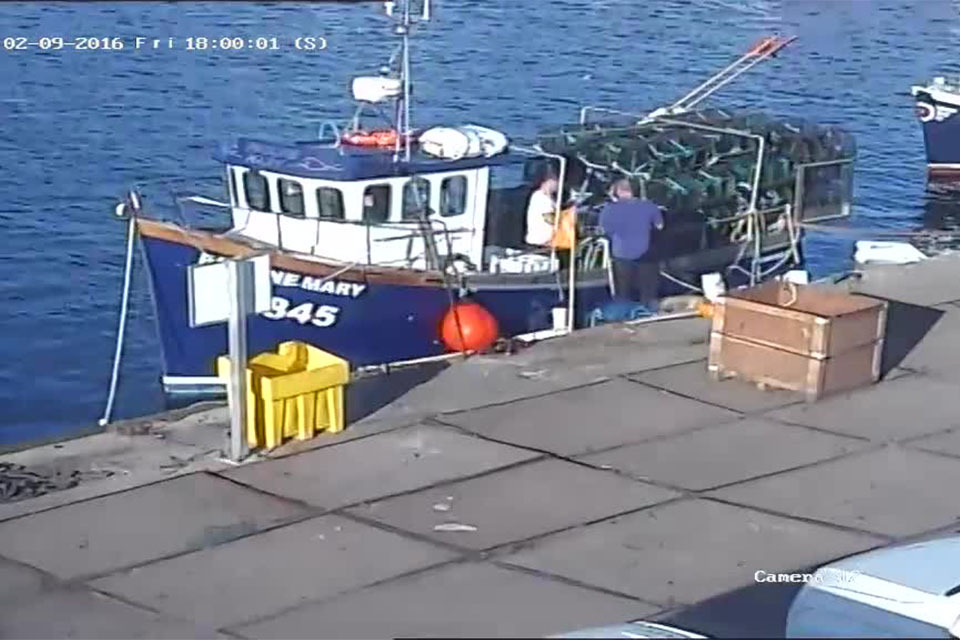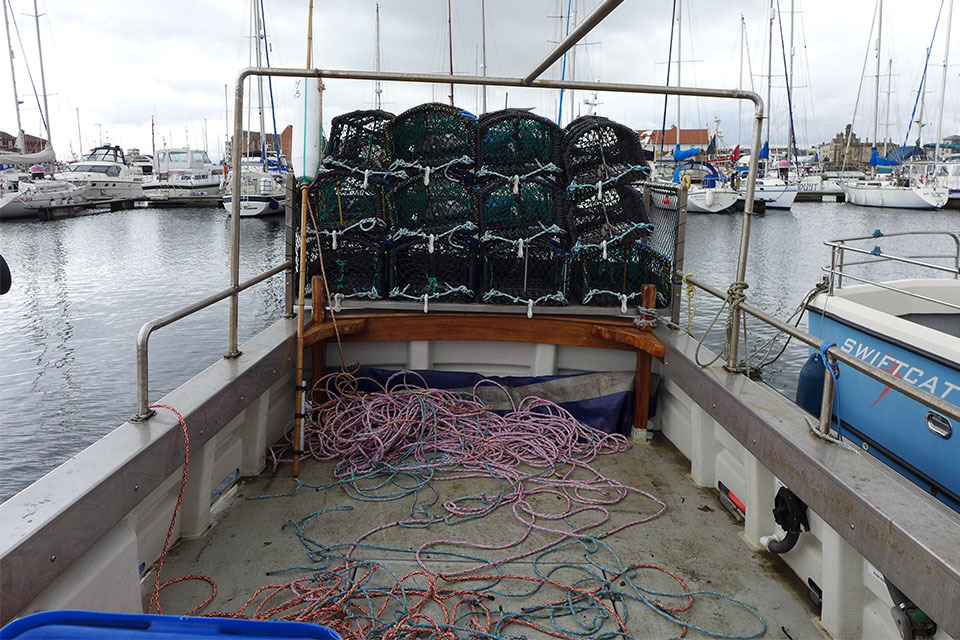Safety flyer to the fishing industry - Pauline Mary
Published 4 May 2017
1. Summary
Fishing vessel Pauline Mary (WY845) fatal man overboard accident on 2 September 2016
2. Narrative
At 1833 on 2 September 2016, the crewman on board the fishing vessel Pauline Mary was dragged overboard after becoming entangled in the gear while shooting pots at fishing grounds about 1 mile east of Hartlepool. Once in the water, the crewman was pulled under by the weight of the pots. The skipper immediately stopped the vessel and used its hauler to recover the crewman back alongside. With the crewman motionless in the water and his head submerged, the skipper tried to free him by cutting the back rope. This was unsuccessful and the crewman was pulled back under water for a second time. The crewman was recovered back on board about 20 minutes later; he was not breathing and, despite the efforts of Pauline Mary’s skipper and the emergency services, could not be resuscitated.
The skipper and the crewman were brothers and were experienced fishermen. However, they had been working Pauline Mary for only 2 days and were laying their pots for the first time when the accident happened. The skipper’s 7-year-old son and a female family friend were also on board at the time.
In order to save time during the initial pot laying process, the skipper loaded two strings of 30 pots on board each time he travelled to the fishing grounds. In order to do this, the pots were stacked high on the deck and on the vessel’s steel stern rack (Figure 1). Similarly, the skipper took his son and his friend to sea during the commercial potting operation because he intended to take advantage of the good weather to enjoy a bit of recreational sea angling once the pots had been laid.

Figure 1: Pauline Mary alongside Hartlepool Fish Quay prior to sailing showing the pots stacked on deck (photo: Hartlepool Fish Company Limited)
The investigation identified that Pauline Mary had been heavily loaded with pots and a safe method of shooting them had not been developed. Also, the crewman was not carrying a knife or wearing a personal flotation device (PFD) while working on deck, both of which could have improved his chances of survival. It was also not appropriate for the passengers, in particular a child, to be on board during commercial fishing operations.
3. Safety lessons
Manually shooting pots from the open deck of a small potter can be extremely hazardous, particularly due to the risk of entanglement in ropes. Figure 2 is an illustration of the hazard associated with the loose ropes on the deck. In such circumstances, it is vital that a safe system of work is developed, ideally one where the crew and the ropes are physically separated.

Figure 2: Illustration of the potential hazard associated with loose ropes on deck
It is important to keep a sharp knife handy at all times. Had the crewman been carrying a knife, or if one had been readily available on deck, there would probably have been an opportunity for the crewman to cut himself free before being pulled overboard.
Always wear a lifejacket when working on an exposed deck. Had the crewman been wearing one, it could have improved his chances of survival by lifting his head above water when he was first hauled back to the surface.
On small potting vessels, space can be very limited on the deck; it is important to think about the loading. Given that the fishing grounds were only a short distance from the harbour, it would have been easy to load and then shoot a single string of pots at a time, rather than managing the additional risks of having two strings on board at the same time.
Although not significant in this case, there was a short delay in the coastguard identifying the vessel’s position. Had Pauline Mary’s digital selective calling (DSC) distress button been pressed, an action that takes about 5 seconds, the coastguard would have been alerted immediately to the incident, including the vessel’s position, ensuring that rescue services would be on scene as fast as possible.
The hazards for visitors, especially children, on board fishing vessels are very significant and difficult to manage. In this case, it would have been easy to separate the commercial and recreational use of the boat by returning to harbour to collect the passengers after the pots had been laid.
Our accident investigation report is available at: https://www.gov.uk/maib-reports/man-overboard-from-potting-fishing-vessel-pauline-mary-with-the-loss-of-1-life
For all general enquiries:
Marine Accident Investigation Branch
First Floor, Spring Place
105 Commercial Road
Southampton
SO15 1GH
Email iso@maib.gov.uk
Enquiries during office hours +44 (0)23 8039 5500

